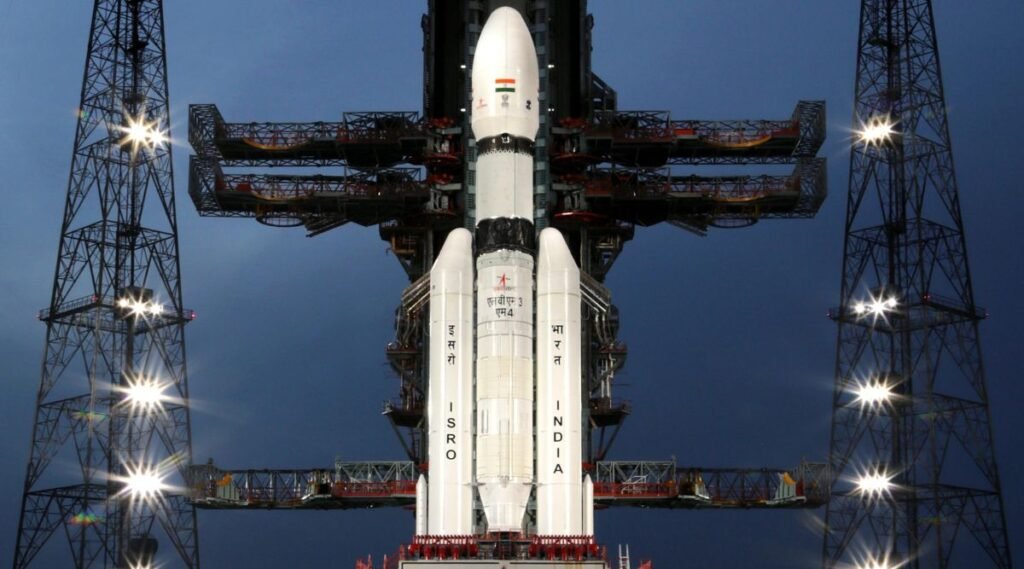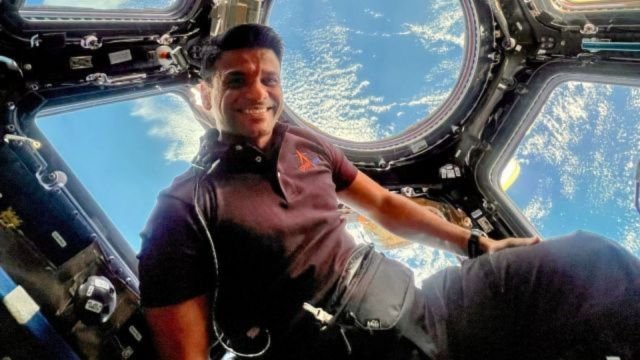When we talk about India’s space achievements, one name now shines brighter than ever before, Chandrayaan-3. This mission is more than just a scientific milestone. It is a symbol of India’s resilience, technological progress, and ambition to take a stronger role in space exploration. On August 23, 2023, India created history by becoming the first country to successfully land near the lunar south pole. This remarkable achievement not only brought pride to millions of Indians but also placed the nation firmly on the global space map.
In this article, we will explore the journey of Chandrayaan-3, its objectives, the challenges faced, the significance of its success, and what it means for the future of India’s space program.
The Dream Behind Chandrayaan-3
The Chandrayaan-3 mission was developed by the Indian Space Research Organisation (ISRO) as a follow-up to Chandrayaan 2. While Chandrayaan 2 had successfully placed an orbiter around the Moon in 2019, its lander Vikram crashed during its descent. That incident, though disappointing, ignited a stronger determination among India’s scientists to try again.
Chandrayaan-3 was conceived with one clear goal, to achieve a successful soft landing on the Moon. Unlike Chandrayaan 2, this mission did not include an orbiter. Instead, it focused purely on the lander and rover, which together would carry out the mission’s scientific tasks.
This decision reflected ISRO’s clarity of purpose: they wanted to prove India’s ability to land safely and operate on the Moon.
Building Chandrayaan-3: A Mission of Precision
The development of Chandrayaan-3 involved years of planning, testing, and innovation. The mission had three major components:
- Vikram Lander – Designed to perform a soft landing on the lunar surface, carrying scientific instruments.
- Pragyan Rover – A six-wheeled rover housed within the lander, tasked with exploring and studying the lunar surface.
- Propulsion Module – Responsible for carrying the lander from Earth’s orbit to the Moon’s orbit.
Each part was carefully engineered with improvements from Chandrayaan 2. For example, the Vikram lander was given stronger legs and better sensors to ensure a stable landing. ISRO scientists also developed new algorithms for precise navigation and landing.
The Launch of Chandrayaan-3
The mission lifted off on July 14, 2023, from the Satish Dhawan Space Centre in Sriharikota, Andhra Pradesh, using the powerful LVM3 M4 rocket. As the rocket soared into the sky, millions of Indians watched with hope, prayer, and excitement.
After launch, the spacecraft slowly raised its orbit around Earth before moving into the Moon’s orbit. This journey took about a month, as ISRO followed a step-by-step approach to conserve fuel and ensure accuracy. Finally, on August 5, 2023, Chandrayaan-3 entered lunar orbit, bringing it one step closer to its historic moment.
The Historic Lunar Landing
On August 23, 2023, at 6:04 pm IST, ISRO achieved what the world was waiting for. The Vikram lander of Chandrayaan-3 touched down safely near the Moon’s south pole. The success came after a tense 15-minute descent, often referred to as the “15 minutes of terror,” where every move of the lander was critical.
When the lander touched the lunar surface without any glitch, celebrations erupted across India. People danced in the streets, scientists hugged each other with tears of joy, and the nation felt united in pride. Prime Minister Narendra Modi, who was watching live from South Africa during the BRICS Summit, congratulated ISRO and called this success a victory for all of humanity.
Why the Lunar South Pole Matters
The Chandrayaan-3 mission chose the lunar south pole for landing, a region never explored by any country before. This area is of immense scientific interest because:
- It contains large craters that are permanently shadowed.
- These craters may hold frozen water, which could be vital for future human missions.
- The region’s soil and rocks may provide clues about the Moon’s history and even the early solar system.
By reaching this area, India has opened new possibilities for future lunar exploration.
Scientific Goals of Chandrayaan-3
Once the Vikram lander and Pragyan rover were safely on the Moon, the real scientific work began. The rover, weighing about 26 kilograms, rolled out onto the lunar surface and started its exploration. Its main objectives included:
- Studying the composition of the lunar soil and rocks.
- Analyzing the presence of elements such as magnesium, aluminum, silicon, and iron.
- Measuring seismic activity on the Moon.
- Examining the plasma environment near the lunar surface.
Though the rover’s mission life was about 14 Earth days (equal to one lunar day), the data it collected was invaluable for future studies.

Challenges Faced During the Mission
The success of Chandrayaan-3 was not easy. The mission had to overcome several challenges, including:
- Harsh Lunar Environment – The Moon’s surface has extreme temperatures, ranging from scorching heat to freezing cold.
- Landing Precision – Achieving a soft landing on uneven lunar terrain required cutting-edge navigation and control.
- Communication Delays – Signals between Earth and the Moon take more than a second to travel, making real-time control difficult.
Despite these challenges, ISRO’s careful planning and determination made the mission a triumph.
India’s Rising Space Power
The success of Chandrayaan-3 marked India’s arrival as a major space power. With this achievement:
- India became the first country to land on the Moon’s south pole.
- India joined the elite club of nations (alongside the US, Russia, and China) that have successfully landed on the Moon.
- The mission showcased India’s ability to achieve world-class results at a fraction of the cost compared to other space agencies.
This success also boosted India’s reputation in the global space community, making ISRO a valuable partner for international collaborations.
Chandrayaan-3 and Global Recognition
The global response to Chandrayaan-3 was overwhelmingly positive. Space agencies, scientists, and leaders from around the world congratulated India on this remarkable achievement. NASA, the European Space Agency, and other space organizations acknowledged India’s contribution to space exploration.
This recognition showed that space is no longer dominated by just a few powerful nations. India’s success inspired many developing countries to believe that with determination, even limited resources can achieve extraordinary goals.
Lessons from Chandrayaan-2 to Chandrayaan-3
One of the most inspiring aspects of this mission is how ISRO turned the failure of Chandrayaan 2 into a stepping stone for success. Instead of being discouraged, scientists analyzed the failure, improved the technology, and came back stronger.
This journey is a reminder that failure is not the end, it is a lesson that leads to future success.
What’s Next for ISRO After Chandrayaan-3?
Chandrayaan-3 is only one chapter in India’s growing space story. ISRO has many ambitious plans lined up:
- Aditya L1 Mission – A mission to study the Sun, launched in September 2023.
- Gaganyaan Mission – India’s first human spaceflight program, aiming to send astronauts into space.
- Future Lunar Missions – Possible collaborations with other countries for advanced lunar exploration.
- Mars and Beyond – ISRO has expressed interest in future Mars missions and even exploring Venus.
These missions show that India is ready to take on even greater challenges in space exploration.
Chandrayaan-3: A Symbol of National Pride
Beyond science and technology, Chandrayaan-3 has become a symbol of national pride. It united people from every corner of India and gave a strong message to the world about what the country can achieve.
From schoolchildren to senior citizens, everyone followed the mission with excitement. Social media was flooded with posts, memes, and celebrations, showing how deeply this success touched the nation’s heart.
Final Thoughts
The success of Chandrayaan-3 is not just about landing on the Moon. It is about showing the power of perseverance, learning from failure, and aiming high. It reflects India’s journey from being a developing country with limited resources to becoming a global leader in science and technology.
As the rover Pragyan explored the Moon’s surface and sent back valuable data, it carried with it the dreams and pride of over a billion people. Chandrayaan-3 will forever be remembered as the mission that changed India’s space journey and inspired the world.
Read More: Hostage Review: A Gripping Political Drama Powered by Brilliant Performances










Leave a comment